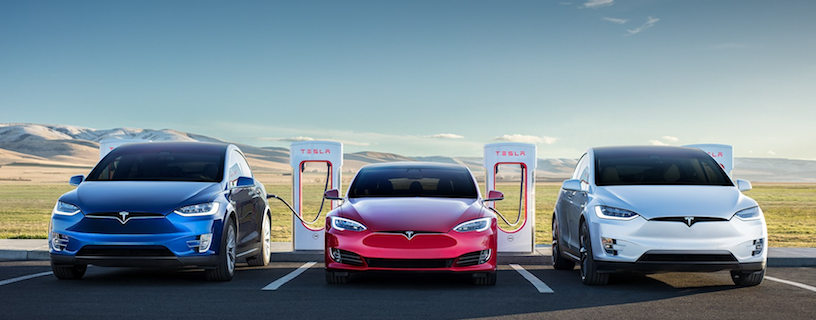Tesla reported its Sept-18 quarter results. Making electric vehicles profitably and funding the company’s growth through operations is a big deal, and the stock is reacting accordingly, with shares up ~10% after hours. Our key takeaways:
- Profitability is improving at a rate where the company is on track to generate enough cash to meet its $1.7B debt obligations in the coming year ($230M due in Nov. 2018, $920M due in March 2019, and $566M due in Nov. 2019).
- Model 3 appears to be benefiting from success with customers who have historically not purchased premium cars. This is evidenced by the fact that more than half of the vehicles traded in for a Model 3 originally retailed for less than $35k. Surprisingly, these customers are willing to stretch their budget to an average selling price of around $59k.
- Model 3 gross margin, which was over 20% in the Sept-18 quarter, still has room to increase, even as ASPs come down.
- The company did not provide an update on the search for a new chair of the board. Tesla has about a month and a half to make a decision.
Winning the War
How Can Margins Improve with Lower-Priced Model 3?
Model 3 gross margin, perhaps the most important metric for the company at this point in time, was above 20% in the Sep-18 quarter. This was a full quarter ahead of investor expectations. Long-term, Tesla is targeting ~30% gross margin for the Model 3, which begs the question, on the way down to the $35k base price (currently at $46k), how do margins increase? CFO Deepak Ahuja stated that overall manufacturing costs declined 30% sequentially in Sep-18 and, further, that once production is stabilized, “the whole team can focus on cost optimization.” Lowering COGS involves countless variables, but some variables have meaningful room for improvement including, labor hours per vehicle and the time it takes to deliver a vehicle. Additionally, beginning deliveries in Europe and Asia will allow the company to have greater control over the product mix, a positive for ASPs and gross margins.
Tax Credit Fade Offset by Europe and Asia Rollout
Starting in 2019, the US tax credit will begin to fade from $7,500 today, to $3,750 for the first half of 2019, and then to $1,875 for the remainder of the year. This effectively represents a 7% increase in the cost of a Model 3 to a US buyer. When asked on the conference call, the company indicated that European deliveries in Mar-19 and Asia Pacific deliveries starting mid-2019 should offset any slip in demand related to the tax credit change. We agree that Model 3 demand will continue to inch up in 2019 but recognize that growth would be higher if the tax credit remained unchanged.
China Factory Years Away but Will Have Measurable Impact on Business
The company did not update timing of a China factory beyond mentioning they are “accelerating the timeline.” Our best guess is Tesla will start producing cars in China in 2020, despite public comments of plans to have active Model 3 capacity in 2019. The China market represents the largest EV opportunity globally. Currently, Teslas face a 40% import duty in China, creating artificially low demand. Producing cars in that region will significantly lower the cost of the vehicles (lower tariffs, labor, and delivery costs).
Ride-Sharing Vision
From what we consider the toy department, the company, once again, outlined its ride-sharing vision. In short, Tesla intends to operate a Tesla-owned ride-sharing network that competes directly with Lyft/Uber. Additionally, the company plans to allow Tesla owners to add their vehicles to the network, akin to an Airbnb for your car. Musk suggested third parties may work with Tesla to manage the fleet. Two things are clear: 1. We are 6+ years away from this being a reality; 2. Tesla is serious about entering the ride-sharing market.
Disclaimer: We actively write about the themes in which we invest or may invest: virtual reality, augmented reality, artificial intelligence, and robotics. From time to time, we may write about companies that are in our portfolio. As managers of the portfolio, we may earn carried interest, management fees or other compensation from such portfolio. Content on this site including opinions on specific themes in technology, market estimates, and estimates and commentary regarding publicly traded or private companies is not intended for use in making any investment decisions and provided solely for informational purposes. We hold no obligation to update any of our projections and the content on this site should not be relied upon. We express no warranties about any estimates or opinions we make.
